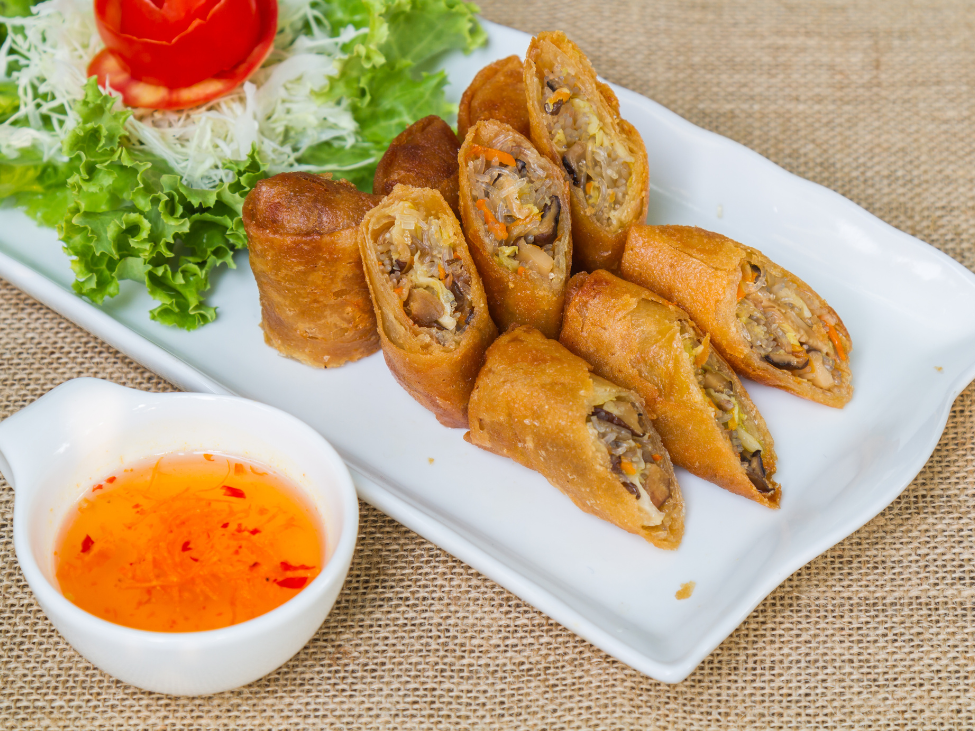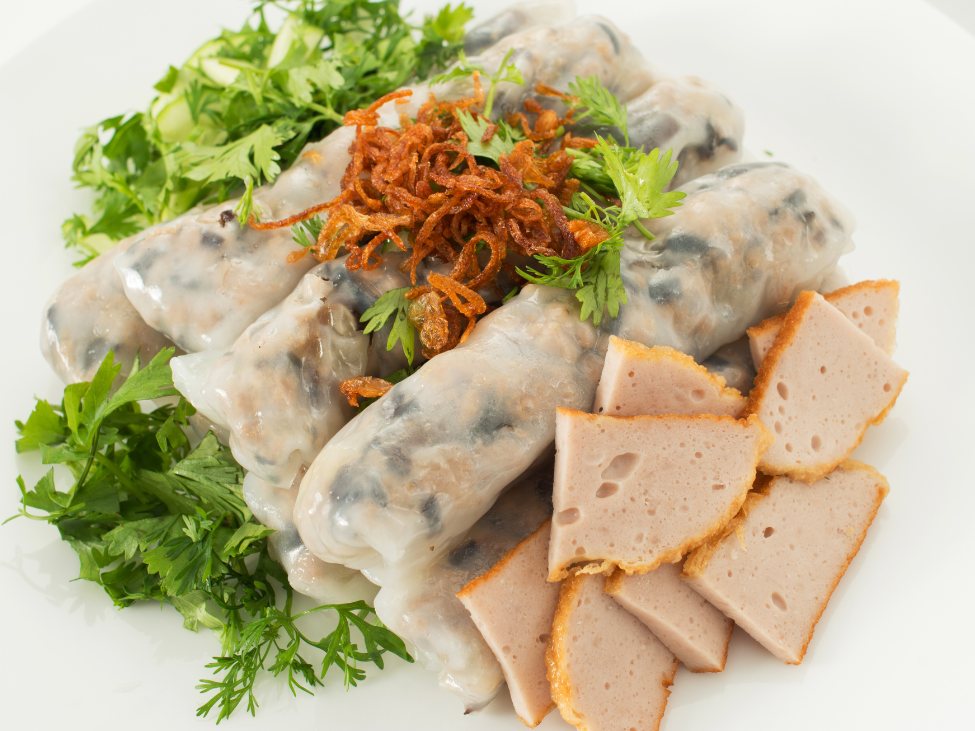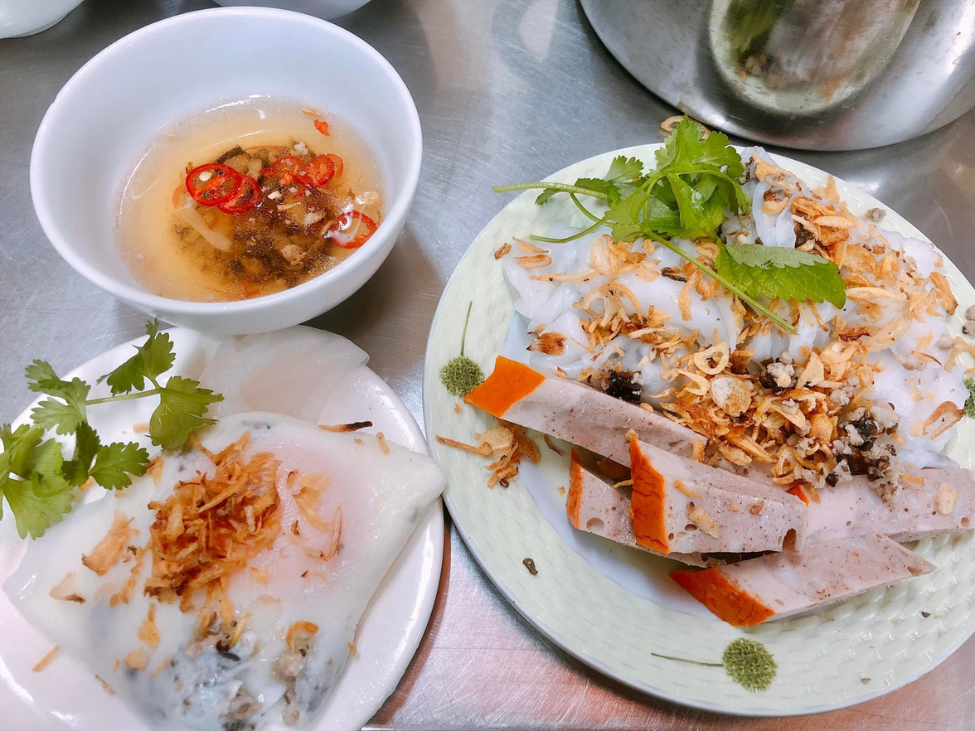Unforgettable Hanoi Food Tour: 10 Local Street Food Secrets by Vespa
- Vespa Adventures

- Aug 11
- 11 min read
Hanoi's Old Quarter awakens at dawn with a symphony of sizzling woks, bubbling broths, and motorbikes weaving between food stalls like choreographed chaos. The city doesn't gradually wake up—it explodes into aromatic life, with every street corner releasing clouds of lemongrass, fish sauce, and possibility. This is where a Hanoi food tour transforms from simple dining into cultural immersion, revealing what locals actually eat when tourists aren't watching. These hidden food gems scattered throughout Hanoi's narrow alleyways tell stories that no guidebook captures.
Street food in Hanoi isn't performed for visitors—it's an authentic way of life that welcomes curious travelers willing to squat on plastic stools beside locals. The vendors aren't creating Instagram moments; they're feeding their communities with recipes passed down through generations. When travelers discover these secret spots tucked away in Hanoi's maze-like streets, they taste Vietnam's soul in ways that polished restaurants simply cannot replicate. The real magic happens in the spaces between tourist zones, where authentic Hanoi experiences unfold naturally.
Hidden Gems in Hanoi's Old Quarter
Pho Bo: Hanoi's Soul in Every Bowl
Every authentic Vespa tour Hanoi food experience begins with pho, because understanding Vietnam starts with understanding this legendary soup. Real pho bo—the beef version that built culinary legends—differs dramatically from sanitized restaurant versions. At the hidden gem Pho Gia Truyen on Bat Dan Street in Hanoi's Old Quarter, the broth has simmered for decades, with recipes passing through generations like precious family heirlooms. This isn't just breakfast; it's liquid history served in ceramic bowls.
The magic unfolds at 6 AM when Hanoi locals queue up on tiny plastic stools, slurping noodles while scooters idle inches away, exhaust mixing with aromatic steam in a dance that somehow feels perfectly Vietnamese. The broth reveals layers of complexity—bone-deep richness from hours of simmering, subtle char from flame-kissed ginger, and herbal brightness that explains why Vietnamese people choose this for breakfast, lunch, and comfort. Each spoonful connects diners to centuries of culinary tradition that survived wars, invasions, and modernization.
The vendor's practiced hands assemble each bowl with surgical precision and lightning speed—thirty seconds for noodles in hot water, beef arranged with artistic care, herbs balanced like miniature ecosystems. This represents craft at its purest form, costing less than a Western coffee while delivering incomparable satisfaction. Watching this daily ritual reveals why pho holds such special significance in Vietnamese culture.

Banh Mi: Where French Meets Vietnamese in Hanoi's Streets
French colonial influence created unintended culinary magic when Vietnamese ingenuity transformed European techniques into something uniquely local. At the legendary Banh Mi 25 on Hang Ca Street in Hanoi's bustling commercial district, each sandwich serves as an edible history lesson—French baguette mastery meeting Vietnamese creativity in a fusion that somehow achieves perfection. The bread emerges from ovens hot enough to warm entire street corners, crispy exterior yielding to an interior so light it practically dissolves upon contact.
The filling assemblage tells Vietnam's complex story: house-made pate that bridges familiar and exotic flavors, cilantro that tastes garden-fresh, pickled vegetables providing acidic brightness that explains why Vietnamese cuisine survived countless cultural invasions. The entire creation gets assembled with mechanical efficiency that would impress German engineers, yet maintains the soulful touch that distinguishes handcrafted food. Standing there with banh mi juices dripping down wrists while motorbikes buzz past like mechanical insects, diners discover this isn't merely street food—it's successful cultural fusion at its most delicious.
Each bite contains Vietnam's resilience: influenced by outsiders but never truly conquered by them. This sandwich represents how Hanoi transforms external pressures into internal strengths, creating something entirely new while honoring traditional flavors. The combination works because it respects both heritages without compromising either one.

Bun Cha: Hanoi's Most Famous Export
When world leaders visit Hanoi, they inevitably discover bun cha, and locals simply nod in recognition—of course visitors fall in love with this dish. Bun cha represents Vietnamese cuisine distilled to its purest essence: perfectly grilled pork, garden-fresh herbs, delicate rice noodles, and dipping sauce containing more complexity than most fine dining establishments achieve. At the renowned Bun Cha Huong Lien in Hanoi's Ba Dinh district, grill masters tend their coals with monastic concentration, understanding that temperature control separates good bun cha from transcendent experiences.
The pork receives just enough charring to caramelize natural sugars without burning, creating smoky sweetness that defines Vietnamese grilling mastery. The accompanying dipping sauce balances sweet, sour, salty, and umami in proportions that change subtly with each vendor's interpretation. The real genius lies in bun cha's interactive nature—diners control every bite, combining cool rice noodles and raw herbs with warm, savory broth in whatever ratios speak to individual palates at that moment.
This dish embodies Vietnamese dining philosophy: food becomes participatory rather than passive consumption. Democracy arrives on a plate, costing approximately three dollars while delivering satisfaction that expensive restaurants struggle to match. Understanding why bun cha captivates international visitors helps explain what makes Vietnamese street food so universally appealing.

Local Favorites Hidden in Hanoi's Alleyways
Egg Coffee: Hanoi's Accidental Masterpiece
When milk became scarce in 1946, resourceful innovation at Hanoi's Sofitel Legend Metropole Hotel led to whisking raw egg yolk with condensed milk, creating what might be Vietnam's greatest accidental culinary discovery. Egg coffee shouldn't work in theory—the combination sounds like a kitchen mistake—but it ranks among Hanoi's most decadent beverages, converting skeptics with every creamy sip.
At the original Cafe Giang, tucked into a narrow Old Quarter alley that most tourists pass without noticing, three generations have perfected this unlikely creation. The coffee uses robust Vietnamese robusta beans, bitter enough to jolt the sleepiest morning commuter. The egg mixture gets whipped into foam so thick it supports spoons, creating texture somewhere between coffee and dessert. When combined properly, the result delivers caffeine-powered indulgence that coats the mouth while energizing the entire system.
Watching baristas prepare egg coffee resembles witnessing culinary magic—simple ingredients transforming into liquid gold through technique and timing that defies explanation. Sitting on Cafe Giang's tiny balcony overlooking Hang Gai Street's controlled chaos, visitors understand that Hanoi's best innovations often spring from scarcity forcing creative solutions. This drink proves that limitations can inspire breakthroughs that outlast their original necessity.

Nem Ran (Fried Spring Rolls): Crispy Perfection in Every Bite
While the world obsesses over fresh spring rolls, Hanoi locals know the real magic happens when rice paper hits hot oil. Nem ran at street stalls throughout the city achieve a level of crispiness that borders on architectural—they shatter between your teeth with an audible crack that's half the pleasure of eating them.
The filling varies by vendor, but the best ones combine ground pork, mushrooms, glass noodles, and just enough seasoning to make each bite interesting without overwhelming the delicate wrapper. At stalls near Hoan Kiem Lake, vendors fry nem ran to order, ensuring maximum crispiness and minimum oil absorption. They emerge from the oil golden brown and absolutely perfect, ready to be wrapped in lettuce and herbs before being dunked in nuoc cham sauce.
This is finger food at its finest—messy, interactive, and completely satisfying. The contrast between the crispy shell and soft filling, the cool herbs and warm roll, creates the kind of textural complexity that makes Vietnamese street food so addictive. Plus, watching the vendor's practiced hands wrap and fry dozens of rolls simultaneously is entertainment worth the price of admission.

Banh Cuon: Steamed Rice Perfection
If pho is Vietnam's soul in liquid form, banh cuon is its grace on a plate. These impossibly thin rice flour crepes, steamed to translucent perfection and filled with seasoned ground pork and mushrooms, represent Vietnamese cooking at its most refined. At street stalls throughout Hanoi's Old Quarter, vendors stretch the rice batter across cloth-covered pots, creating sheets so delicate they could be used as tissue paper.
The magic happens in the assembly. Each banh cuon gets filled with a small amount of seasoned pork and wood ear mushrooms, then rolled with the precision of origami. They're served with fried shallots, Vietnamese ham, and that ubiquitous nuoc cham dipping sauce that makes everything better. The result is elegance disguised as street food—complex flavors wrapped in the simplest possible presentation.
Eating banh cuon properly requires patience and technique. You can't rush these delicate parcels or they'll fall apart in your hands. Instead, you learn the rhythm of Vietnamese dining: slow, contemplative, social. This isn't fast food; it's meditation disguised as breakfast.

Bun Bo Hue: The Soup That Doesn't Mess Around
While pho gets all the international attention, locals know that bun bo hue is Vietnamese soup making at its most badass. This spicy, complex noodle soup from the former imperial city of Hue takes no prisoners—it's aggressive, unapologetic, and absolutely delicious. The broth, tinted red with chili oil and annatto, carries heat that builds slowly then hits you like a freight train.
The noodles are thicker and chewier than pho noodles, able to stand up to the robust broth without dissolving into mush. The protein varies but usually includes sliced beef, pork, and sometimes cubes of congealed pig's blood that sound terrifying but taste like concentrated umami. Fresh herbs, lime, and raw vegetables provide cooling counterpoints to the heat.
At street stalls specializing in bun bo hue, the vendors' faces shine with sweat from tending cauldrons of bubbling, spicy broth. This isn't delicate cooking—it's bold, in-your-face flavor that demands attention. If pho is Vietnamese cuisine's gentle introduction, bun bo hue is the advanced course.

Che Ba Mau: The Sweet Ending That Changes Everything
After hours of savory perfection, your palate needs reset, and che ba mau delivers it in spectacular fashion. This three-color dessert layers red beans, yellow mung beans, and green pandan jelly under a blanket of coconut milk and crushed ice. It sounds simple, even boring, until you realize that simplicity executed perfectly is often more complex than elaborate presentations.
Each spoonful delivers different textures and temperatures—creamy coconut milk, chewy beans, wobbly jelly, crunching ice. The flavors are subtle but distinct, each layer contributing to a final taste that's refreshing without being cloying. Street vendors throughout Hanoi serve che ba mau from glass containers that look like small aquariums, the colorful layers creating an edible rainbow.
This dessert represents Vietnamese sweets at their best—restrained, balanced, more interested in harmony than shock value. It's the perfect end to a street food marathon, cooling your mouth and cleansing your palate while providing just enough sweetness to satisfy without overwhelming.

Banh Goi: The Pillow That Dreams Are Made Of
Banh goi translates roughly to "pillow cake," and these deep-fried parcels of joy justify their dreamy name. Wrapped in rice paper and stuffed with ground pork, mushrooms, and glass noodles, they emerge from hot oil golden and puffed like small cushions. The wrapper achieves that perfect balance between crispy exterior and chewy interior that makes Vietnamese fried foods so addictive.
What sets banh goi apart from similar fried snacks is the seasoning—subtle but distinct, with fish sauce providing umami depth and white pepper adding gentle heat. Street vendors fry them in small batches, ensuring each one emerges at peak crispiness. They're served immediately, still crackling from the oil, with lettuce leaves and herbs for wrapping and, of course, nuoc cham for dipping.
The beauty of banh goi lies in its simplicity. This isn't fancy cooking trying to impress anyone—it's honest food made well. The kind of snack that makes you understand why Vietnamese street food has conquered the world through pure deliciousness rather than marketing campaigns.

Ca Phe Sua Da: The Iced Coffee That Started an Obsession
Vietnam's relationship with coffee began with French colonialism but evolved into something entirely its own. Ca phe sua da—Vietnamese iced coffee with condensed milk—might be the country's most successful cultural export after pho. At street stalls throughout Hanoi, vendors brew individual cups using metal drip filters called phin, a process that requires patience but rewards it with coffee that's intensely flavorful without being bitter.
The ritual is half the pleasure. Coffee drips slowly into a glass containing condensed milk, creating distinct layers of cream and dark brown liquid. Ice gets added, the mixture stirred, and suddenly you're drinking liquid energy that tastes like dessert. The coffee is strong enough to power a motorbike, but the condensed milk smooths out any harsh edges.
Sitting on a plastic stool watching Hanoi wake up while drinking ca phe sua da represents Vietnamese street food culture at its most perfect. This isn't about the coffee alone—it's about taking time, observing life, participating in daily rituals that connect you to place and people. It's anthropology you can drink.
Image Suggestion 6: Vietnamese iced coffee dripping through phin filter into glass Alt Text: Ca phe sua da Vietnamese iced coffee street food culture Hanoi File Name: hanoi-vietnamese-iced-coffee-phin-filter-street.jpg

The Real Journey: Beyond Food in Hanoi's Streets
Here's what guidebooks rarely reveal about authentic Hanoi food tours: the cuisine serves as introduction to deeper cultural understanding. The genuine experience unfolds between meals—navigating narrow Old Quarter alleyways, learning to interpret subtle signals indicating which stalls deserve attention, discovering that in Vietnamese culture, eating never happens in isolation. These moments of connection occur naturally when travelers approach local food culture with curiosity rather than conquest.
The most rewarding things to do in Hanoi don't unfold in temples or museums—they happen at plastic tables where strangers become temporary friends over shared meals and enthusiastic gestures that transcend language barriers. Visitors learn that Vietnamese hospitality isn't performative; it springs from genuine curiosity about outsiders willing to participate in local dining customs. Street food vendors throughout Hanoi aren't catering to tourists—they're nourishing their communities with recipes that carry generational wisdom.
The Vietnamese cuisine encountered on Hanoi's streets represents thousands of years of cultural evolution, foreign influences absorbed and transformed into something distinctively Vietnamese. When travelers participate respectfully in these daily food rituals, they gain insights into Vietnamese resilience, creativity, and community values that shaped this remarkable culture. This understanding transforms casual visitors into temporary locals, creating memories that outlast any souvenir.
Making It Real: Your Vespa Food Adventure
The difference between eating Vietnamese street food as a tourist and experiencing it as a temporary local comes down to context, timing, and trust. A well-planned food tour connects these dots, transforming random eating into cultural immersion. When you're riding behind a local guide who knows which stall makes the best bun cha at 7 AM versus 2 PM, which vendors use MSG and which rely on traditional techniques, you're not just eating—you're learning to read a city through its flavors.
Vietnamese market visits become lessons in ingredient selection, seasonal cooking, and the economics of street food. You discover that the best vendors often occupy the smallest spaces, that quality has nothing to do with cleanliness by Western standards, and that the most memorable meals happen at stalls with no English menus and three plastic stools.
The beauty of exploring Vietnamese street food by Vespa is the spontaneity it allows. When you spot a crowd of locals at an unmarked stall, you can pull over immediately. When you smell something incredible wafting from an alley, you can investigate. This isn't about checking items off a list—it's about following your nose and trusting your instincts.
"Street food in Hanoi isn't a tourist attraction—it's a way of life that happens to be accessible to curious outsiders willing to squat on plastic stools and trust their stomachs to strangers."
Ready to Discover Hanoi's Hidden Food Gems?
The authentic Vietnam doesn't reveal itself in air-conditioned restaurants with English menus and tourist prices. It unfolds on plastic stools at sunrise, over steaming bowls shared with locals who become temporary friends, in conversations conducted through smiles and pointing gestures that need no translation. These ten dishes represent just the beginning of Hanoi's vast street food universe—a complex ecosystem of flavors, traditions, and stories that reveals itself gradually to patient, respectful visitors.
Guided Vespa food experiences transform random eating into cultural education, connecting travelers with local experts who understand that memorable meals require context, history, and authentic stories. The difference between tourist dining and local immersion lies in having knowledgeable guides who know which hidden street food spots only Vespas can reach throughout Hanoi's maze-like alleyways. Because ultimately, food provides the introduction—the real journey begins when travelers realize they're not just tasting Vietnam, they're starting to understand its soul.
Ready to trade comfortable tourist experiences for authentic flavors that tell Hanoi's real story? Join the Hanoi Foodie Experience to discover these hidden gems with local guides, or start your day with the Wake up with Hanoi morning tour to experience breakfast culture like locals do. For evening adventures, the Hanoi After Dark tour reveals how street food transforms after sunset. Your taste buds—and cultural understanding—will never be the same.
Frequently Asked Questions About Hanoi Street Food Vespa Tours
What's the best time to experience Hanoi street food?
Early morning (6-8 AM) offers the most authentic experience as locals start their day with fresh pho and coffee. Evening tours (6-9 PM) showcase different dishes and the vibrant nighttime atmosphere. Local markets are most active during these peak hours when ingredients are freshest.
Is Hanoi street food safe for tourists?
Hanoi street food is generally safe when choosing busy stalls with high turnover and following basic precautions. Look for vendors popular with locals, ensure food is served hot, and start with smaller portions to allow your system to adjust. Most visitors experience no issues when selecting reputable food tour guides familiar with the cleanest, highest-quality vendors.
How much does street food cost in Hanoi?
Individual dishes typically range from $1-3 USD, making it incredibly affordable compared to restaurant dining. A complete street food meal with multiple dishes and drinks rarely exceeds $10-15 per person. This affordability allows visitors to sample numerous specialties without budget concerns, making food tours exceptional value for cultural immersion.



Comments